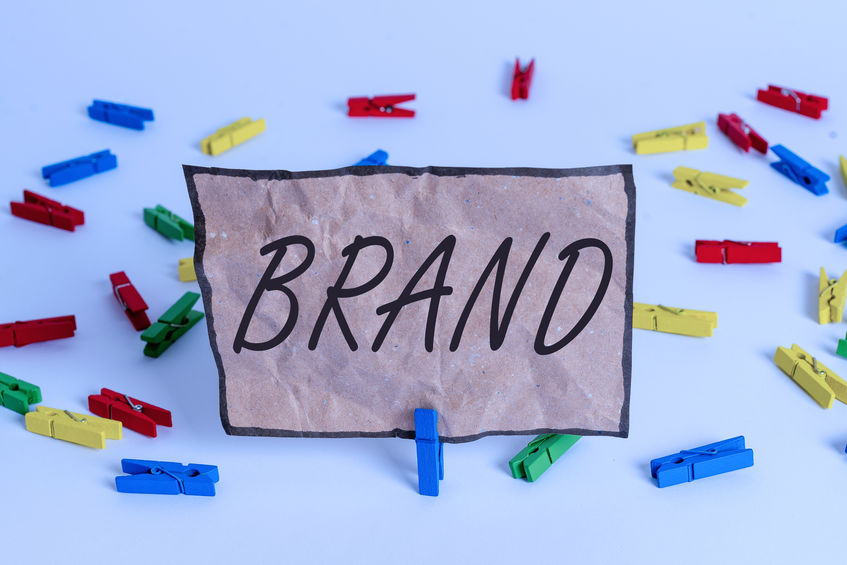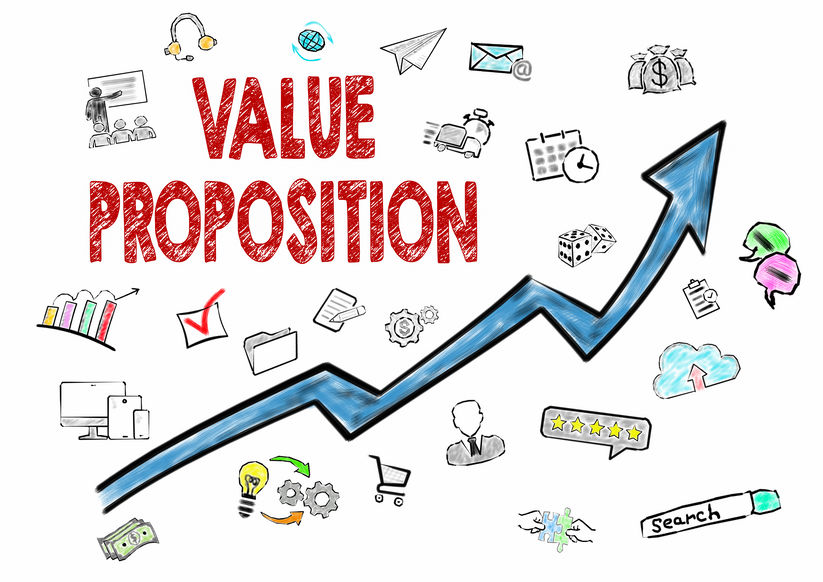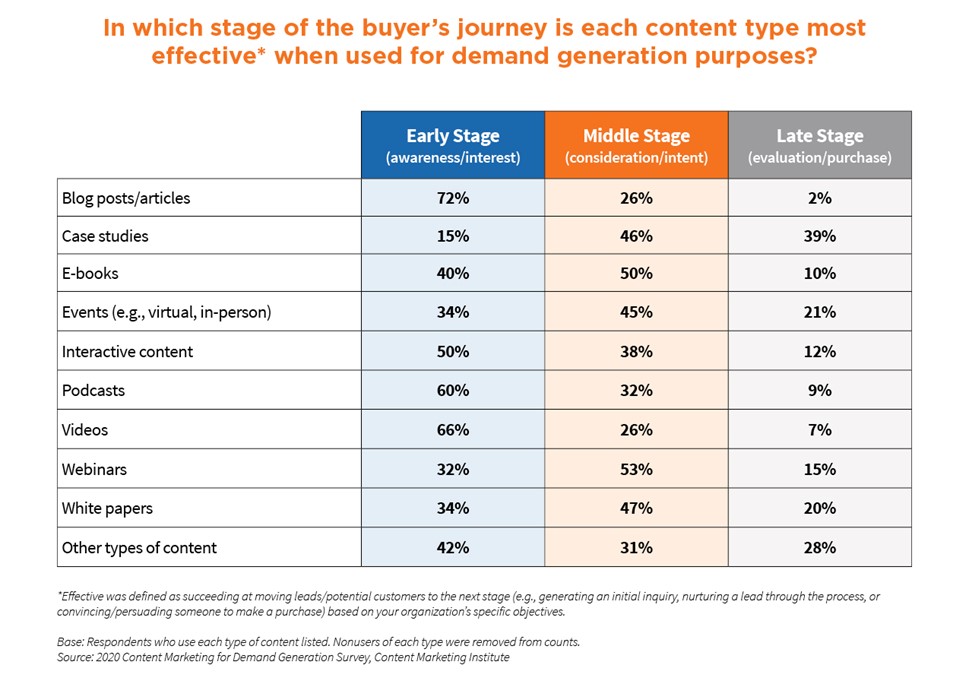It’s a fact. Content sharing vital and relevant expertise is one of the best ways to connect and engage with prospects and clients. A surprising 96 percent of successful content marketers say content marketing helped them build credibility and trust with their audiences. The best marketers know that great content has compounding benefits. These benefits include better brand awareness, improved search engine rankings, enhanced relationships with prospects and customers and ultimately a stronger bottom line. That said, content isn’t one-size-fits-all. The type and the timing of content creation matters, especially when used to move a prospect through the sales process. By developing a diversified and consistent content marketing mix, marketers can reach prospects and clients at every stage of the buyer’s journey and guide them through the sales funnel.
Early Stage: Awareness

The early stage (or the top level of the sales funnel) is all about brand awareness and generating interest. Content at this stage should be attention-grabbing, introduce prospects to your company and reflect your brand. Content can come from your website, email campaigns, social media updates and other outreach initiatives. Typically, short-form content resonates at this stage. Buyers rank blogs and articles as the most important early-stage content, followed by videos and podcasts. This type of content works well because it is easily consumable and interesting, regardless of whether the individual is looking to make a purchase. Most consumers (84 percent) expect brands to provide content that entertains, tells stories, offers solutions and creates experiences. Videos and podcasts, which by nature are sharable and relatable, reach wider audiences.
Middle Stage: Consideration

The middle stage of the buyer’s journey occurs after potential buyers are aware of the brand and their interest is piqued, but before they decided if they have a need. That is why it is called the “consideration” stage. What’s important at this stage of the buyer’s journey is a clear value proposition. This proposition conveys how your products and services solve customers’ problems, what specific benefits you deliver and why you are different from and better than the competition. At the same time, it is important to balance content that supports your value proposition without being overly self-promotional. At this stage, buyers seek detailed and specific content that focuses on identifying their challenges and potential solutions. Top-ranked content for the middle stage includes content built for extensive learning such as white papers, e-books and webinars.
Late Stage: Decision
Every stage of the buyer’s journey is important. The late stage feels like the biggest priority when a buyer is on the verge of making a purchase decision. At this stage, the buyer is in evaluation mode. The prospect will identify and analyze potential courses of action including cost, timing, price and, of course, the competition. Content at this stage shouldn’t just make prospects want to buy, but to buy specifically from you.
Consider how you can define your corporate differential and convey what the customer experience will be with your team. The most effective content includes case studies, customer success stories, testimonials, special offers, product and service guarantees, consultations and live presentations. Roy Chitwood, former president of Max Sacks International and the creators of the Track Selling System, said that prospects buy emotionally but stay sold logically. In other words, after the sale is closed, it is important for the salesperson and the company to deliver on their promises to gain a customer for life, not just make one sale.

Use the Buyer’s Journey to Empower the Buyer

Make it easy for buyers to learn about and purchase from you by identifying and implementing a strategic approach to content development. Don’t fall prey to creating a random assortment of information or sales promotions. Provide the right content at the right time through the right channels. Remember one type of content cannot do it all. A consistent schedule of varied content mediums through varied channels creates avenues for prospects at every stage of the sales funnel to become empowered buyers.
Claudine Bianchi of MarketingLand states, “An empowered buyer is exactly what a sales and marketing organization should be targeting. Sales and marketing should unite to determine who their ideal customer is and how to reveal their latent pain and to move the customer to a place where they are more successful because of the product or service being offered. Marketing cannot do this alone. Sales cannot do this alone.” Seek to understand your audiences and appreciate their needs and challenges. Then develop a strategy delivering relevant content specific to each phase of the buying journey.


Comments are closed.